Learn about the best camera brands today. It’s essential to choose the right brand. It affects image quality and the rest of your kit.
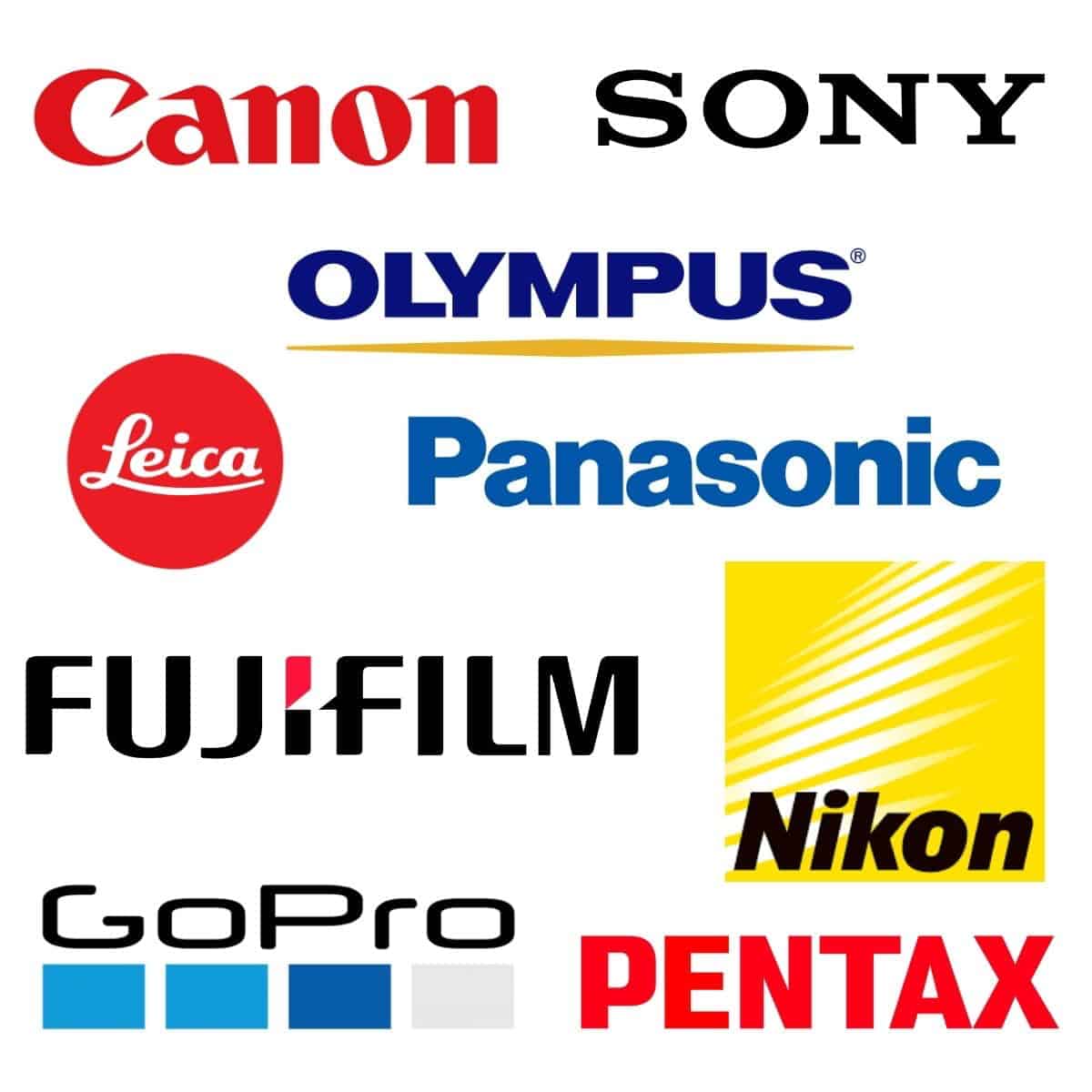
Many camera brands are offering high-quality cameras. With so many options, it can be hard to narrow down the best.
The camera you choose determines the rest of your kit, such as lenses and accessories.
The decision comes down to personal preference, budget, and needs.
Since the Kodak #1 camera in 1888, brands and cameras have evolved. Camera technology is better than ever.
The following covers the best camera brands today.
Instead of ranking the brands from best to worst, it descends on popularity and market share.
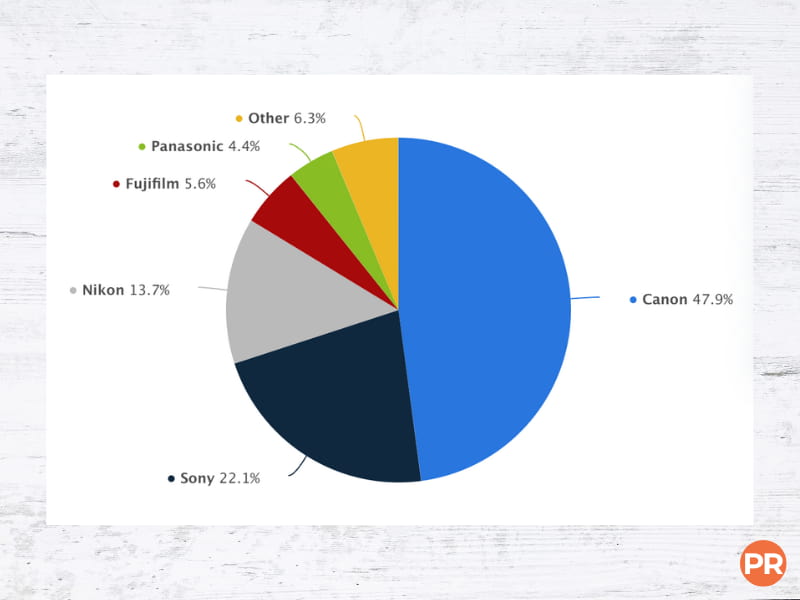
Canon
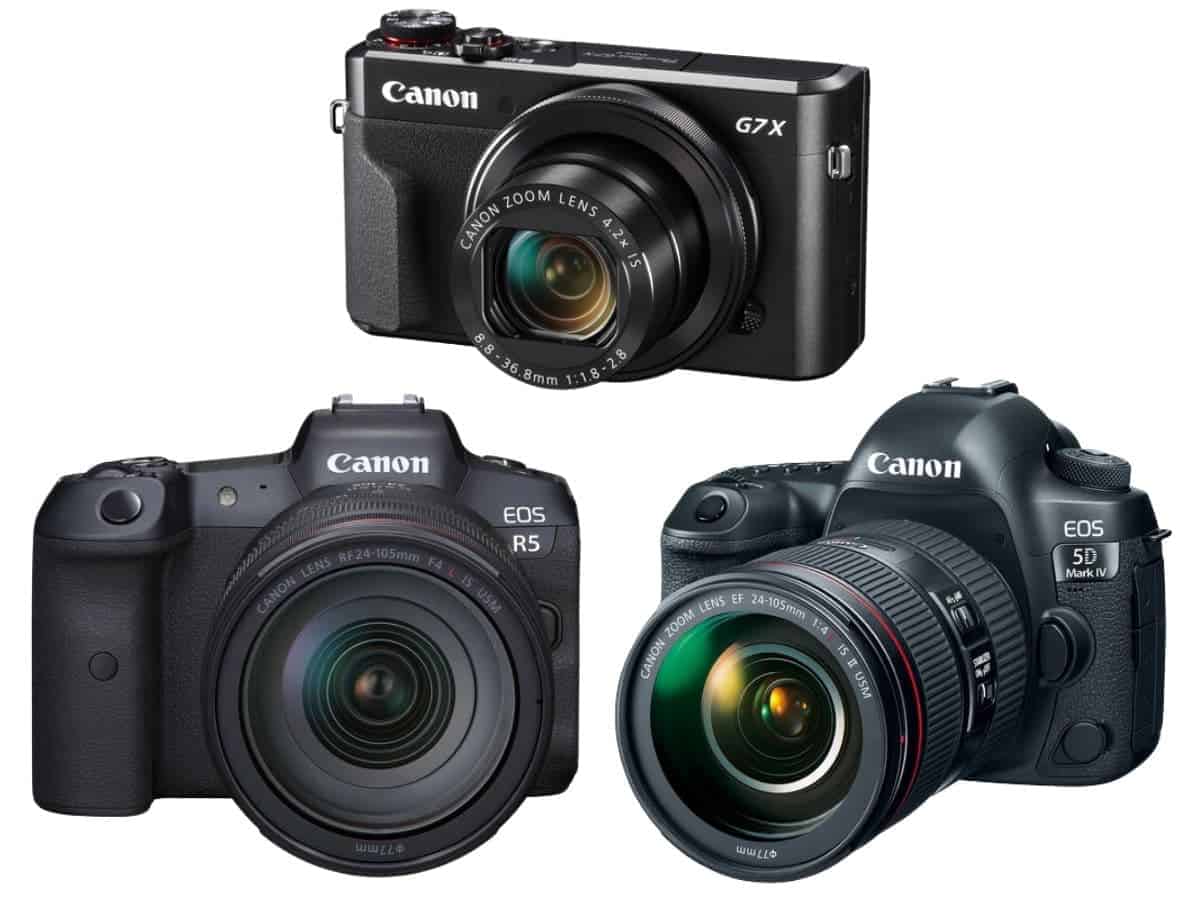
Of all the camera brands, Canon is the best-known one. It accounts for almost half the market share by sales volume.
The origins of the company date back to 1937 in Japan. In 1956, Canon released the VT model. It was their first camera for mass production.
Then, Canon launched its first 35mm single-lens reflex camera in 1959. The company was a pioneer in photography for the masses.
Its reputation consists of reliability, quality, and excellent customer service.
Unlike other brands, Canon moved into digital photography without hesitation.
It offers DSLR, mirrorless, and point-and-shoot cameras for all skill levels.
Canon cameras have ergonomic designs, excellent autofocusing, and intuitive controls.
If you’re new to photography, the Rebel series DSLR cameras are a great place to start. It includes the SL3 and T8i.
If you want a more advanced DSLR, the 90D is ideal.
For vlogging or a compact camera, get the G7 X Mark II.
It’s a stellar camera with a 20.MP sensor and a zoom range of 24-100mm. It also features Full HD 1080p60 video.
Canon also offers the EOS R5, a pro-level mirrorless camera with a 45MP sensor.
While Canon has built a strong brand, it continues to innovate and make better cameras.
Regardless of your skill level, you’ll find that Canon has a camera and upgrade you’ll love.
Sony
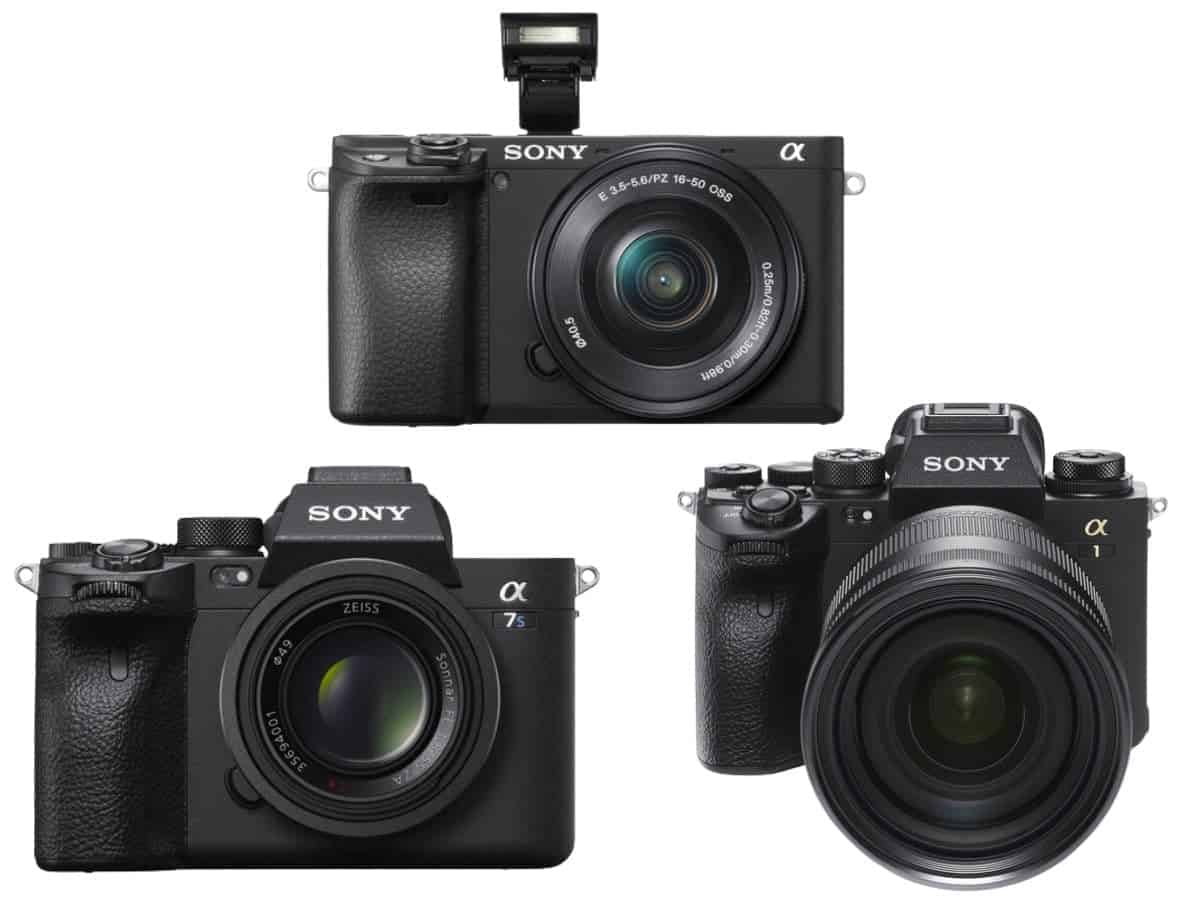
Sony is a well-known technology company. The company offers TVs, headphones, speakers, and many other electronics.
The origins of Sony date back to 1946 in Japan. In 1988, Sony launched its first digital camera, the MVC-C1.
Today, Sony is the second-largest camera brand. In the United States, Sony is number one for full-frame cameras.
While Sony offers DSLR cameras, its mirrorless and point-and-shoot cameras are superior.
Sony Alpha (a) cameras have excellent performance, quality, and in-body image stabilization.
The only drawback with Sony cameras is the small camera bodies and grip.
Besides the ergonomics, Sony is one of the best camera brands.
The ultimate Sony camera is the a7R V. It has a 61MP sensor, AI autofocus system, and 8K 24p video.
If you want a high-quality and versatile option, the a6400 is an excellent choice. It’s a camera you can use as a beginner and keep as you grow.
The best mid-tier Sony camera that’s excellent all around is the a7III. It has a 24MP, records 4K 30p video, and has top-notch speed.
The Sony E-mount lens system allows you to use Sony and third-party lenses, such as Sigma.
Sony is one of the top camera brands to consider. You’ll find fast and lightweight cameras that deliver superior results.
Nikon
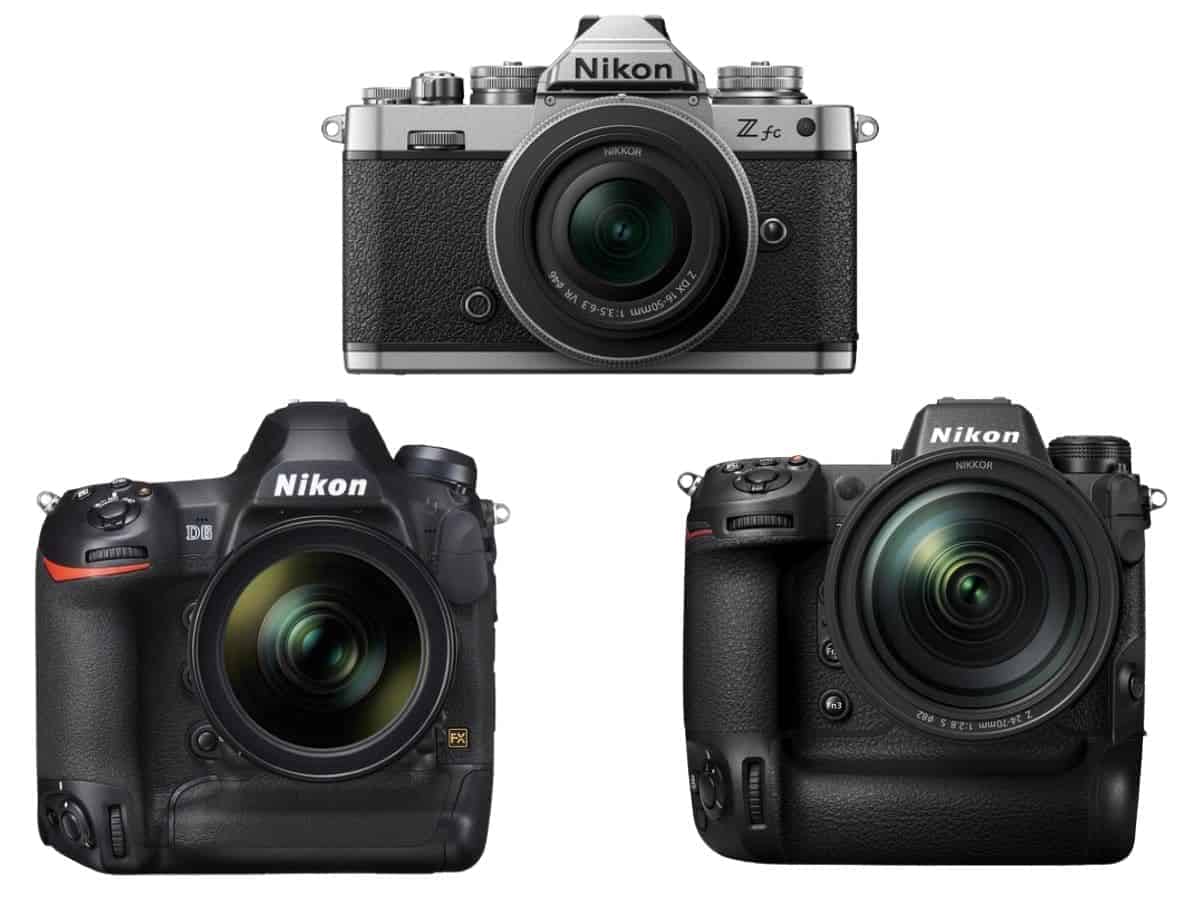
Nikon is the third largest camera manufacturer. Out of the three biggest camera brands, Nikon is the oldest.
Its origins date back to 1917 in Japan. In 1948, Nikon launched its first camera, the Model I. In 1999, the company launched its first DSLR, the D1.
Today, Nikon has a wide array of DSLR and mirrorless cameras.
The results of Nikon cameras have sharp image quality and excellent dynamic range.
If you want a DSLR, the entry-level D3500 is one of the top starter cameras. The D850 is a pro-level DSLR with a 45.7MP sensor.
The Z Series is Nikon’s lineup of mirrorless cameras.
The Z5, Z6 II, and Z9 are three of the top ones. The three cameras range from entry-level to mid-tier to top-tier.
You’ll get beautiful images, a fast burst rate, and in-body image stabilization.
The Z cameras are also great for video, as they can shoot 4K and 8K.
Nikon continues to innovate and make its cameras better.
The cameras have some of the best ergonomic designs, and Nikon has incredible lenses.
Fujifilm
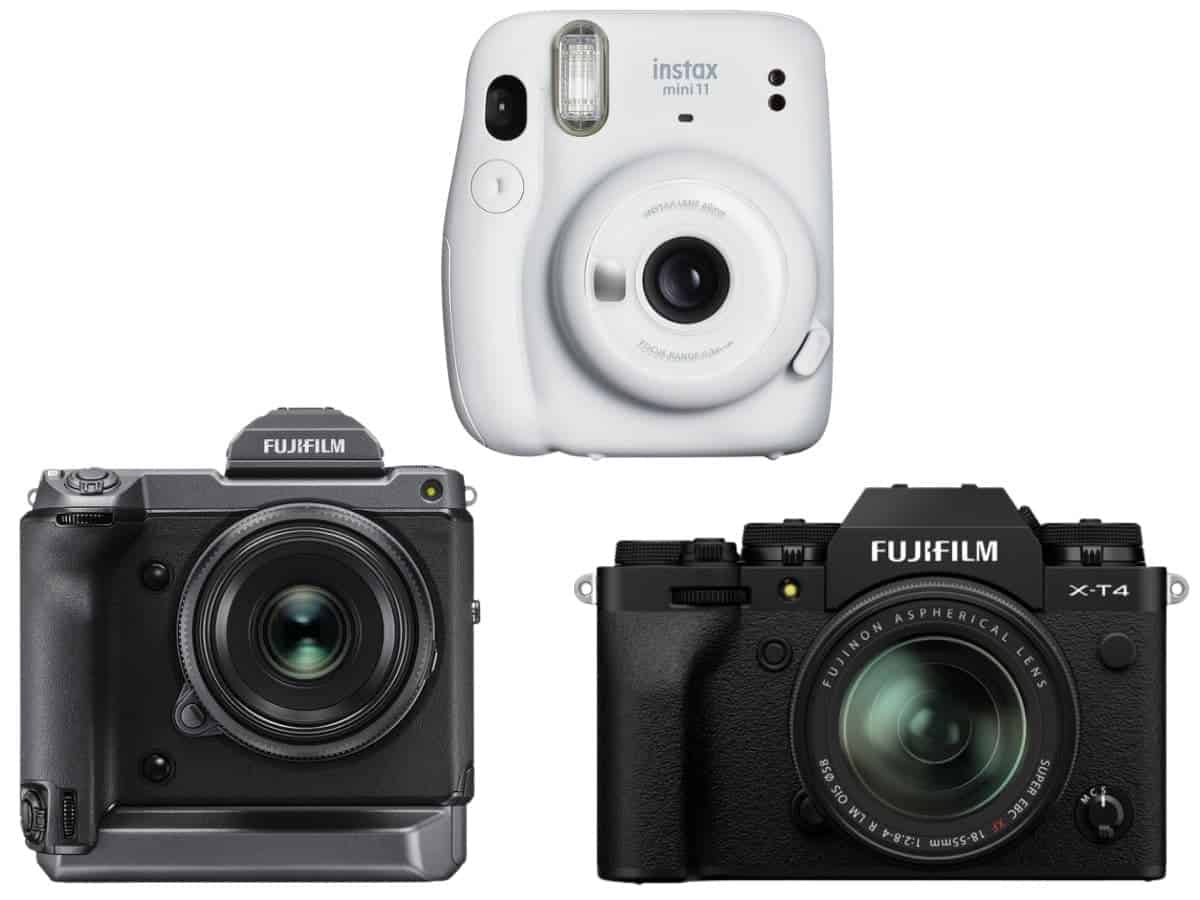
Fujifilm has a smaller market share than Canon, Sony, and Nikon. It makes them a bit of a hidden gem because the cameras are spectacular.
The origins of Fujifilm date back to 1934 in Japan. It was Eastman Kodak’s main competitor at the time.
You might know Fujifilm for film and instant cameras, but it has digital and medium-format options.
Unlike other camera brands, Fujifilm doesn’t make full-frame cameras.
Some might say crop-sensor cameras are a drawback for the brand. But, the results are competitive.
Fujifilm invests a lot of time and resources to make the APS-C cameras on par with full-frame cameras.
The X System is the brand’s mirrorless digital camera line. It features two versatile and incredible cameras, the X-T4 and X-H2S.
Fujifilm’s X System produces beautiful JPEG photos out of the camera. That means less time in post-processing.
If you’re a pro needing a high-end medium format camera, get a camera from the GFX System.
The GFX 100 has a 102MP sensor, in-body image stabilization, and 4K30p video.
You can also get the GFX 100S. It’s a smaller, cheaper, and almost as powerful camera.
The company also cares about aesthetics. Fujifilm cameras have a retro vibe, intuitive controls, and ergonomic designs.
From entry-level to pro-level, Fujifilm has a camera to meet your needs.
Its unique perspective and quality results make it one of the best camera brands.
Panasonic
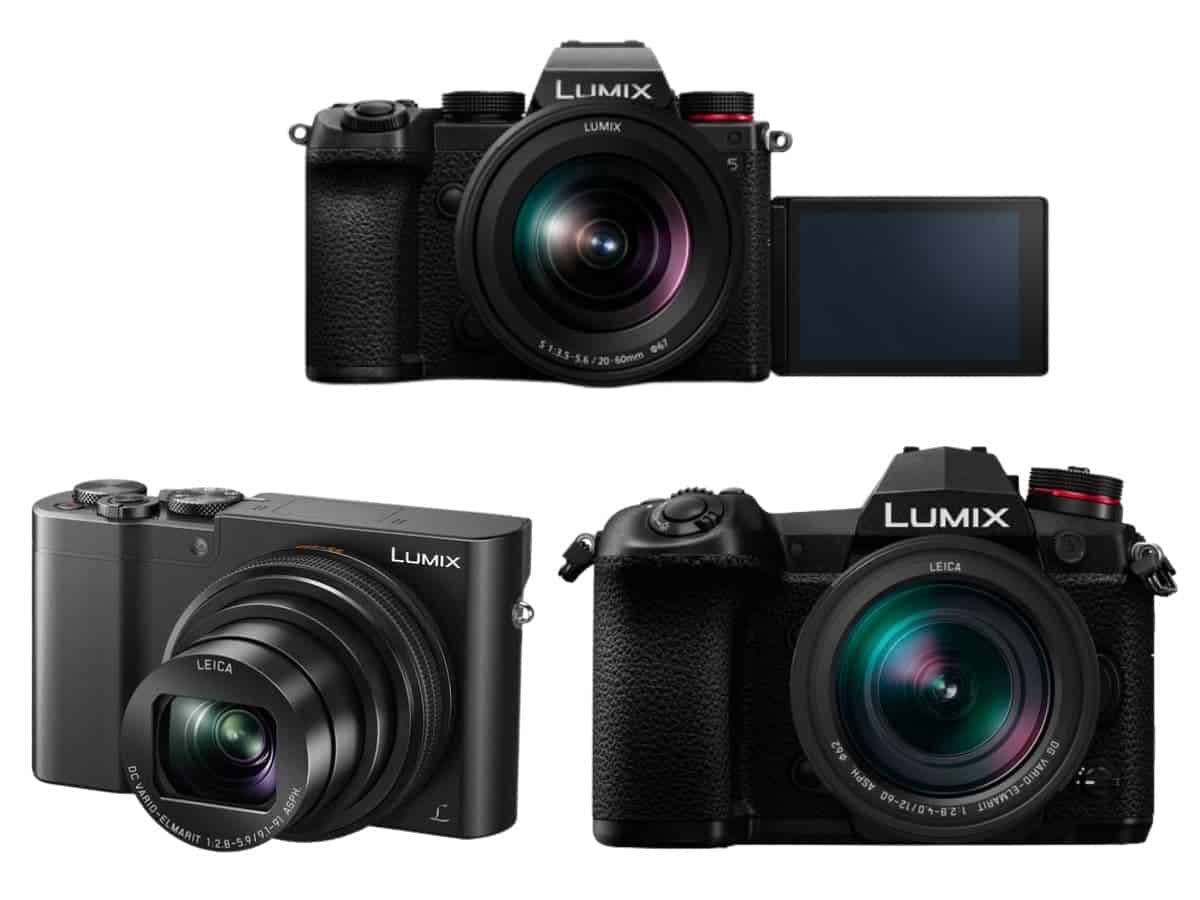
Lumix is Panasonic’s line of cameras and lenses.
The company began in 1918 in Japan as a lightbulb socket manufacturer. Today, it makes cameras, electronics, and appliances.
The brand’s first cameras, the DMC-LC5 and DMC-F7, were launched in 2001.
Now, Panasonic offers quality cameras and lenses that photographers and videographers love.
As a testament to the quality, Panasonic also worked with Leica to develop Lumix Leica lenses.
You’ll find DSLR, mirrorless, and point-and-shoot cameras for various skill levels.
Panasonic also uses the Micro Four Thirds sensor, which it developed with Olympus. So, you can use Olympus lenses on Panasonic cameras.
In 2018, Panasonic also joined the L-Mount Alliance with Leica and Sigma.
Panasonic Lumix is one of the best camera brands for capturing videos and pictures equally well.
The GH6 is one of Panasonic’s top cameras. Its photo and video performance are impressive and superb.
Another option is the S5, which has many of the same features for almost $500 less because it’s older.
Panasonic Lumix is one of the top camera brands, not due to photo quality, but video expertise.
Leica
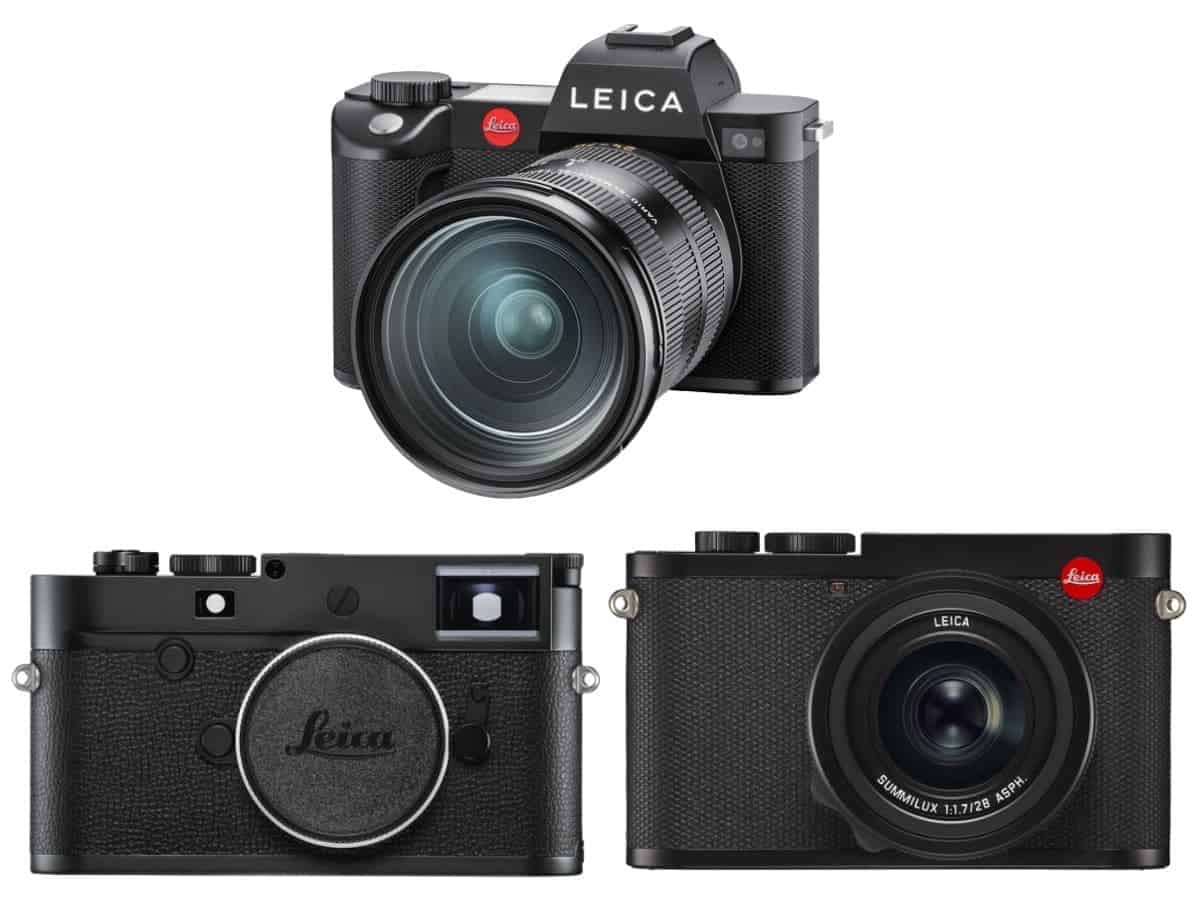
Ernst Leitz founded Leica in 1869 in Germany. Its cameras and lenses are expensive and represent excellent value for the money.
The cameras produce beautiful images and offer a unique shooting experience.
Leica is a luxury brand, and with the budget, its cameras are worth it.
The company has several lines, including the S, SL, M, Q, and CL Systems.
Each system offers exquisite designs, build quality and image quality.
If you want a full-frame mirrorless camera, get the SL2.
It’s a stunning camera with a 47.3MP sensor, 5K video, and an excellent autofocus system.
The M and Q Systems are superior rangefinders and compact cameras.
Leica will meet your needs, whether you’re a beginner or a professional.
You’ll find a one-of-a-kind camera that’ll last a lifetime.
Despite the high price tags, Leica is one of the best camera brands for world-class designs and optics.
Ricoh Pentax
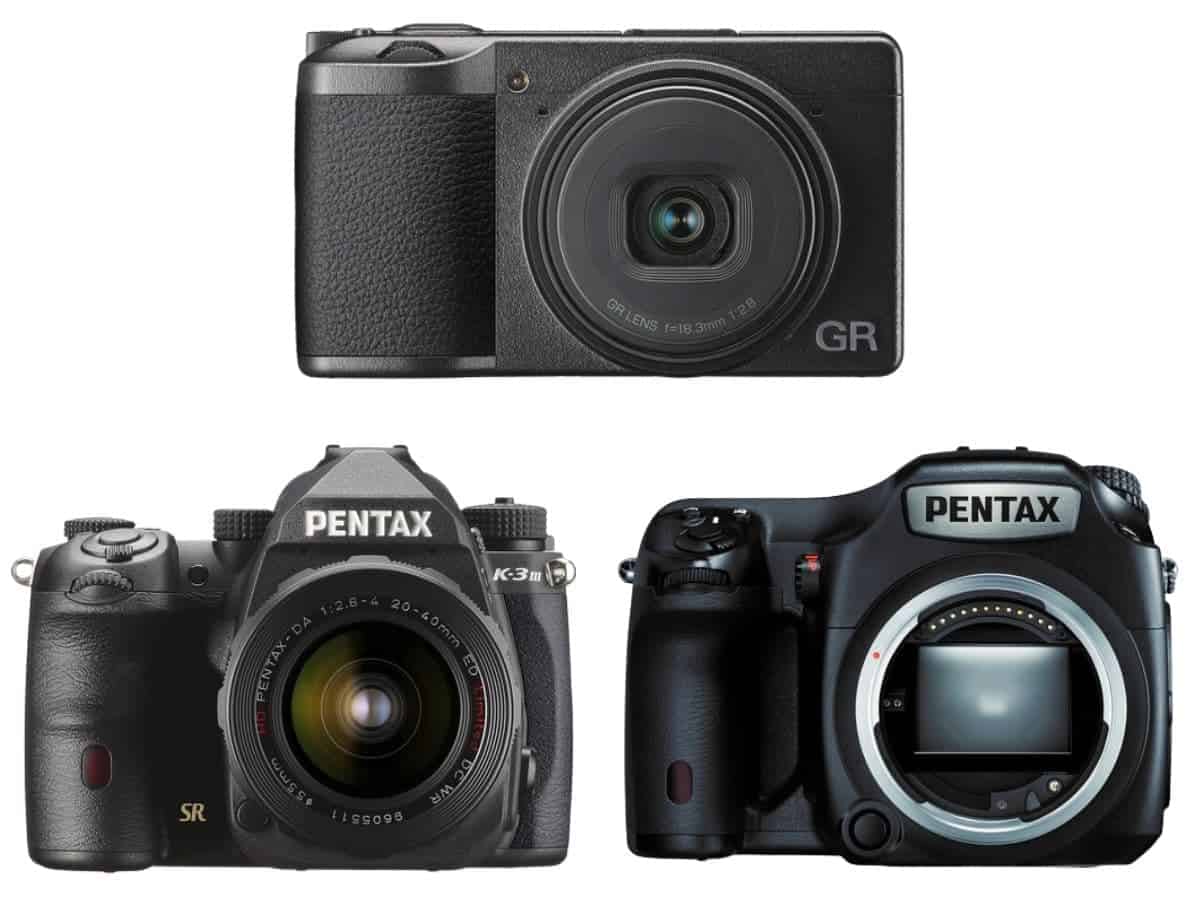
Pentax produces outstanding DSLR and medium format cameras. It’s one of the few camera brands that isn’t switching to mirrorless technology.
The company’s origins date back to 1919 in Japan. In 2011, Ricoh acquired Pentax and still sells its cameras.
It’s known for its retro design, weatherproof build, and in-body image stabilization.
The flagship APS-C is the K-3 Mark III, which has excellent dynamic range, low light performance, and battery life.
It may be a crop sensor, but it exceeds all expectations.
The K-1 Mark II is an exceptional full-frame DSLR camera. It has a 36.4MP sensor, an excellent autofocus system, and IBIS.
If you want a medium format camera, Pentax offers the 645Z. It has a 51.4MP sensor, top-notch ergonomics, and build quality.
The cameras take beautiful photos, and it’s better for photography than videography.
Aside from Pentax cameras, Ricoh offers high-end digital compact cameras.
The GR IIIx is its most popular camera. It has a 24.2MP APS-C sensor, a fixed 40mm f/2.8 lens, and Full HD video recording.
It’s the smallest serious camera available.
Ricoh Pentax is the ideal brand if you want a reliable and high-quality DSLR or compact camera.
Hasselblad
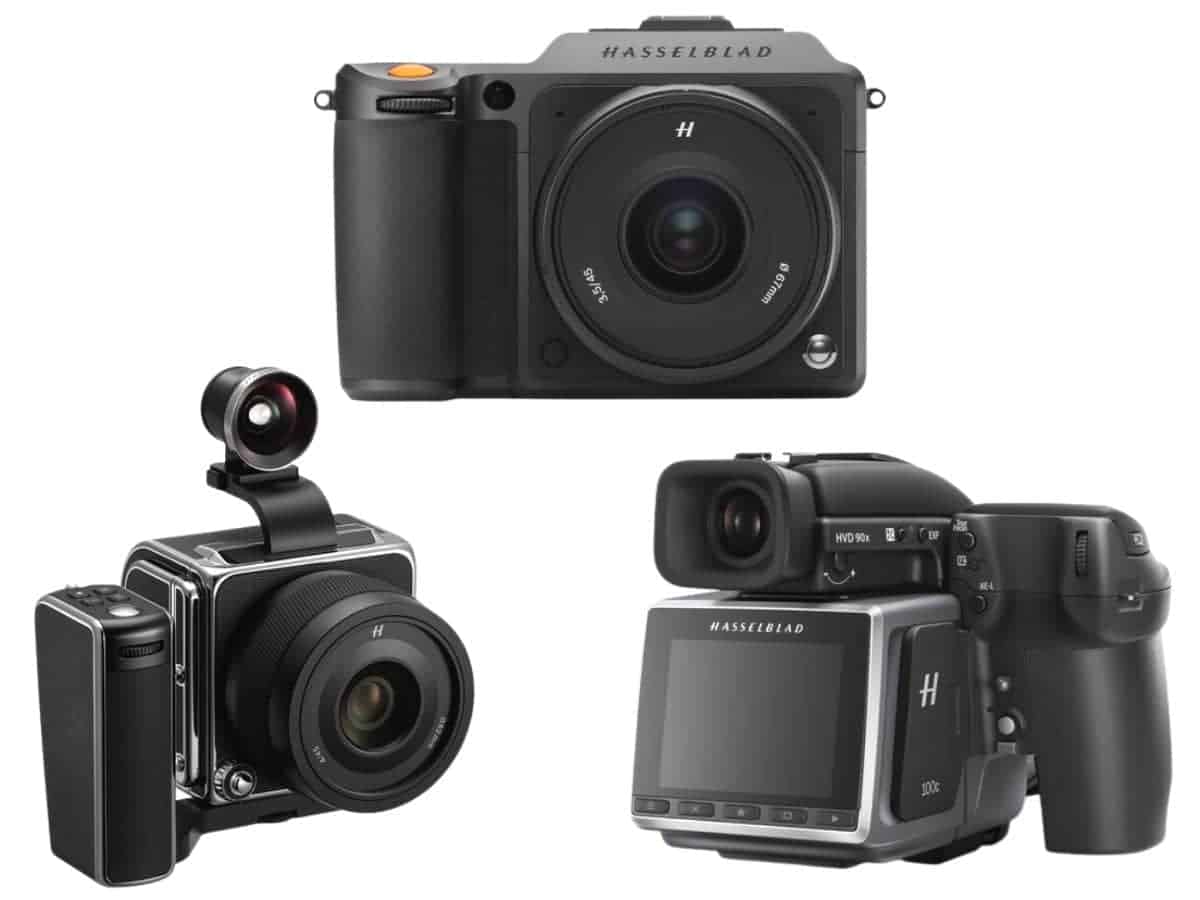
Hasselblad is one of the oldest camera brands. It’s a Swedish brand that dates back to 1841.
Aside from being in the industry for over a century, it makes some of the most expensive cameras.
The cost isn’t due to age. Instead, Hasselblad offers world-class cameras and lenses.
Sharpness, quality, and color accuracy make the cameras worth it.
The cameras are so good that NASA bought the 500C cameras in 1962 for the Mercury 8 mission.
Today, Hasselblad is at the forefront of medium format cameras.
The company offers two high-end medium format mirrorless cameras in the X series, the X2D 100C, and X1D II 50C.
Both cameras have in-body image stabilization, but the X2D 100C has a 100MP sensor, double the X1D II 50C.
The V series offers the iconic 907X 50C. It also has a 50MP sensor and a unique lightweight body. It’s the smallest medium format camera from Hasselblad.
The drawback to medium format cameras is their slow speed. Autofocus and continuous shooting work slowly.
So, don’t get a Hasselblad camera if you need speed. It’s best for shooting portraits, landscapes, and products.
The optics are one of the best in the industry.
Aside from quality, you get a lifetime warranty. It gives you peace of mind when you buy the camera.
Olympus
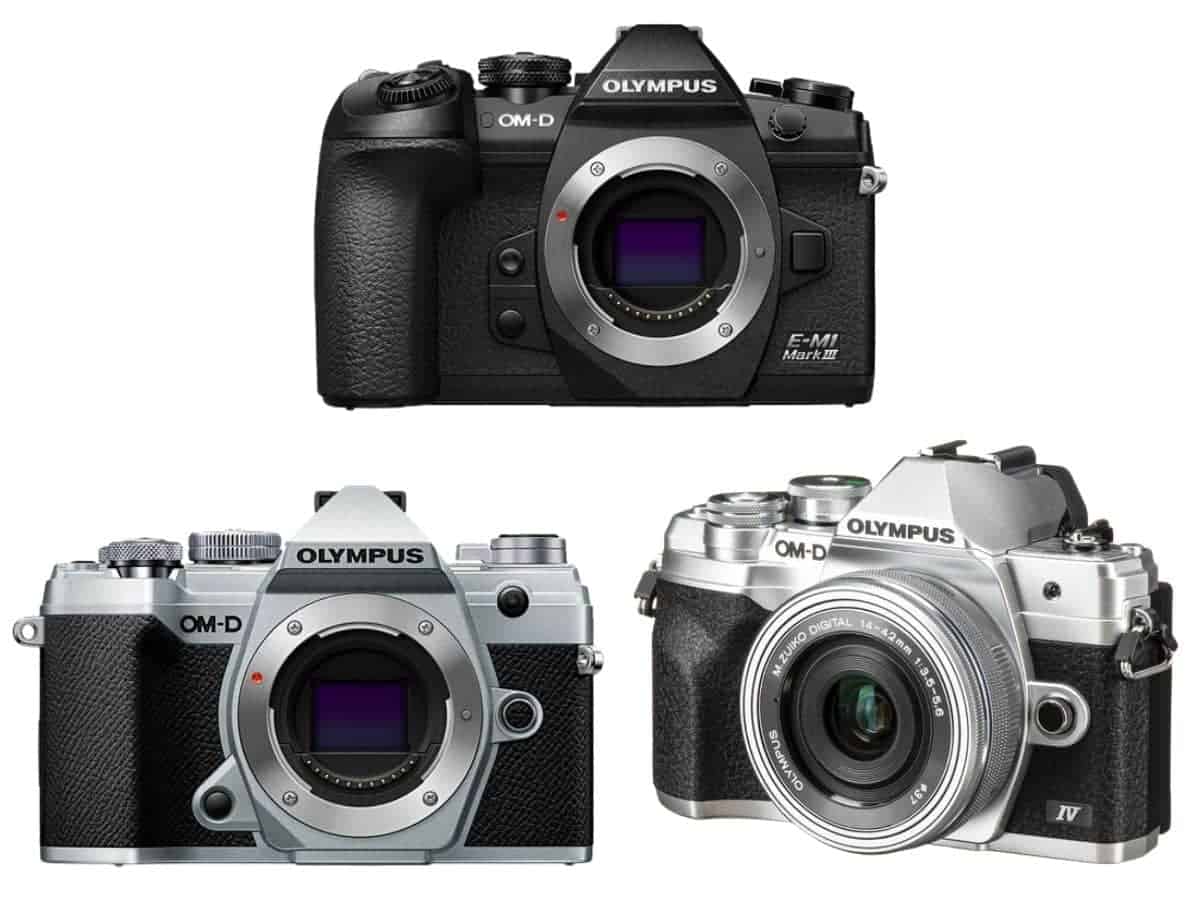
Olympus is a pioneer of the Micro Four Thirds system, and the brand dates back to 1919 in Japan.
The company offers cameras, binoculars, audio equipment, and medical technology.
In 2021, OM Digital Solutions acquired the imaging division. Now, Olympus cameras are under OM System.
The cameras have iconic styling and excellent image quality.
If you shoot videos, consider a different brand. Olympus is best for stills.
The OM and OM-D line is for professional and enthusiast photographers.
The PEN series is best for social shooters. It also offers the Tough series, which are 12MP cameras.
Out of all the choices, the OM System OM-1 is the best Olympus camera. It has a 20.4MP sensor, weather-sealing, and 4K 60p video.
If you want a camera that you can use for a long time without upgrading it, the OM-1 is a must-have.
The drawback is that Olympus lacks innovation. It falls behind many top camera brands.
It’s a contender if you want a Micro Four Thirds camera with solid ergonomics and weather sealing.
GoPro
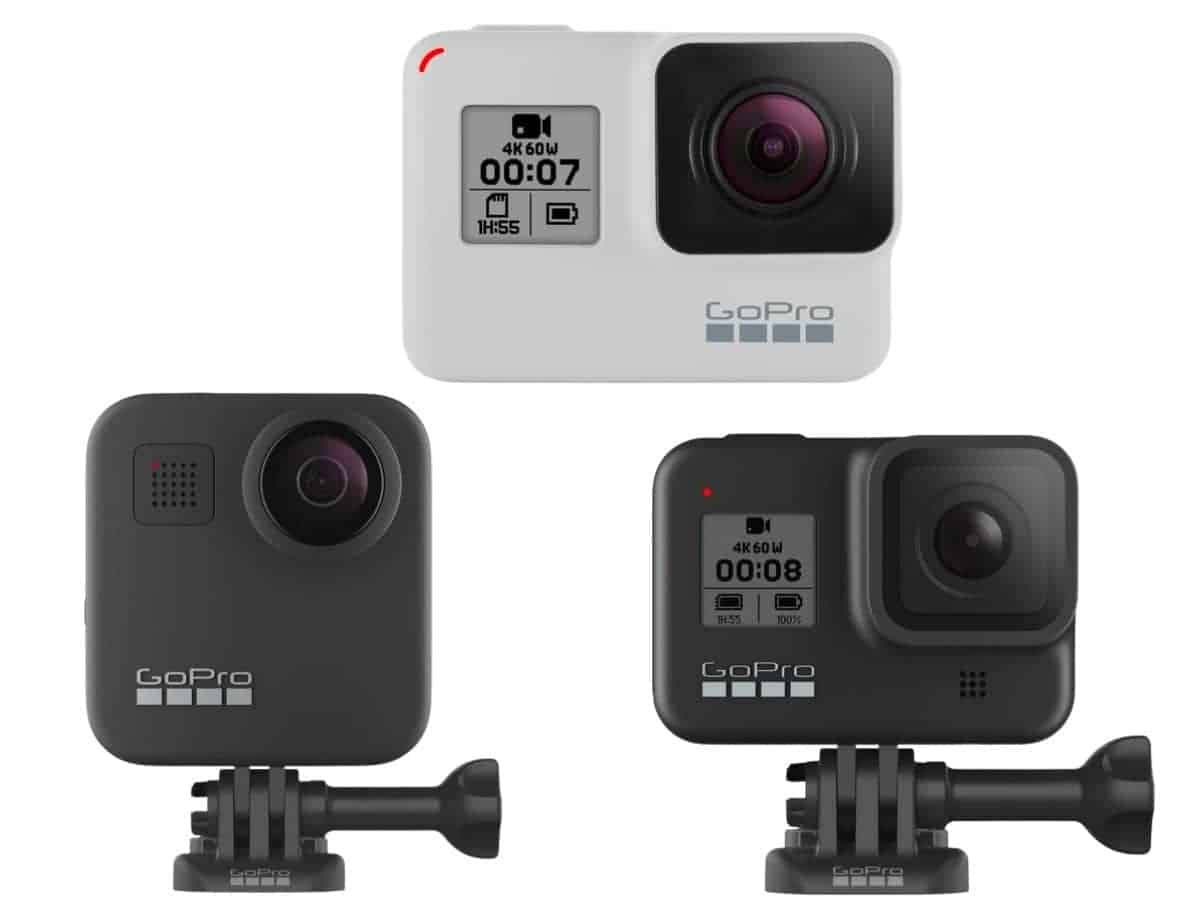
Action cameras are in a separate category from DSLR and mirrorless cameras.
Many small cameras are excellent for adventures and travel. But GoPro stands out from the crowd.
It’s one of the newest camera brands, as it was founded in 2002 in the United States.
GoPro cameras are small, waterproof, and record 4K videos. You can also mount the cameras on most things.
It captures high-quality photos and videos with a small, waterproof and durable camera.
GoPro’s Hero 11 is less than 3 inches in size. It has a 27 MP sensor, image stabilization, and records 5.3K60 video.
If DSLR and mirrorless cameras are too big, but you want similar quality, get a GoPro camera.
Polaroid
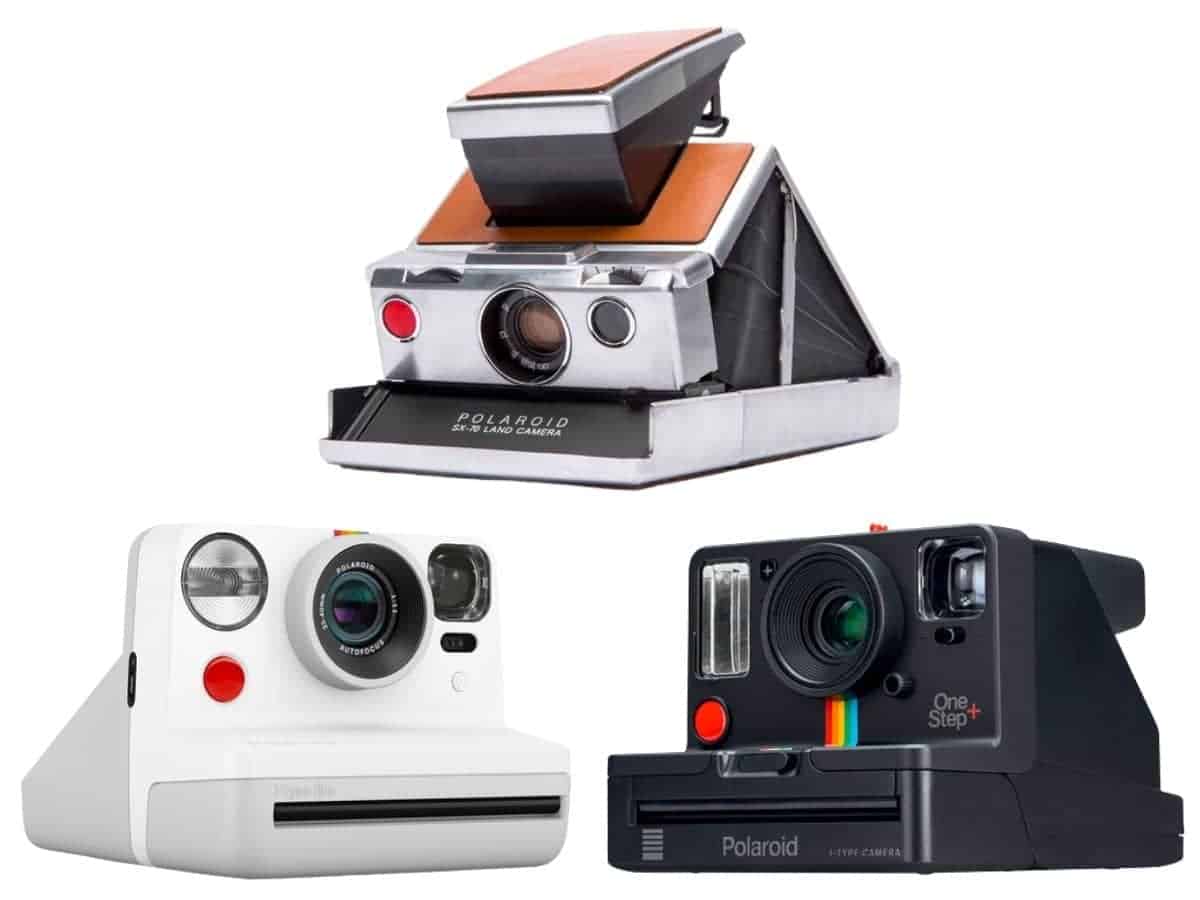
Polaroid is best known for film and instant cameras.
Edwin Land founded the company in 1937 and dominated the instant camera niche in the 1970s.
But, the digital age led to the downfall of Polaroid. Now, the company has a new owner.
It offers trendy and aesthetic instant cameras. If you want to capture and print memories, get a Polaroid.
The Polaroid Now and Polaroid Go are some of the company’s most popular cameras.
It’s not here to compete with high-quality digital cameras. Instead, Polaroid exists as a fun and affordable way to document memories.
Kodak
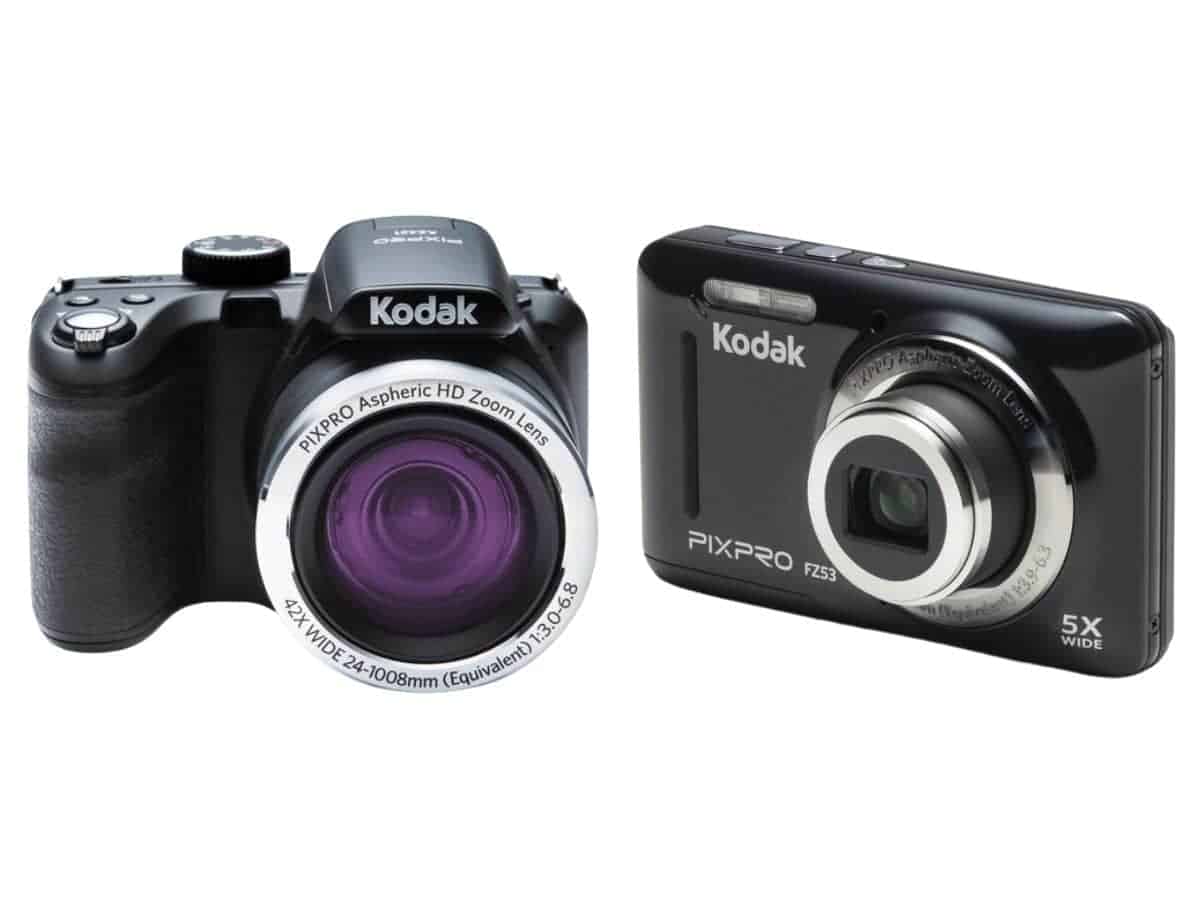
Kodak gets credit for creating color film and a market for amateur photographers.
If you mention film photography, most people will think of Kodak.
The company dates back to 1888 in New York when George Eastman introduced the Kodak #1 camera.
Kodak failed to capitalize on the digital explosion. It fell behind most camera brands.
While Kodak isn’t for professionals, it’s excellent for beginners.
The cameras are less than $200, making it a cheaper way to start than most brands.
Popular Kodak digital cameras include the PIXPRO AZ255 and PIXPRO WPZ2.
The AZ255 has a 16MP sensor and a zoom range of 24-600mm. The WPZ2 has a 16.35MP sensor and a zoom range of 27-108mm.
Kodak isn’t a brand you use for life. Instead, start with Kodak if you have a smaller budget and upgrade later.
Frequently asked questions about camera brands
Which is the number one camera brand in the world?
Canon is the leading camera brand in the world. It has 47.9% of the market share by sales volume. Sony comes in second at 22.1%, and Nikon in third at 13.7%.
Which camera brand is the cheapest?
Kodak and Polaroid have the cheapest digital cameras. But, the quality is like or worse than a smartphone. If you’re on a budget and want a quality camera, Canon is the best brand for excellent entry-level gear.
What brand do most professional photographers use?
Canon is the most popular camera brand among professional photographers. Sony and Nikon are the other two that professionals use.
Conclusion
With so many camera brands, making a decision can be difficult.
It’s essential to know what’s available. But choosing a camera comes down to what you prefer.
Aside from learning about the camera brands, test out different cameras to find the right one. Observe the quality, handling, and results.
Through research and testing, you’ll find a perfect match.
Related: The Best Tripod Brands
Featured image courtesy of Canon, Sony, Olympus, Leica, Panasonic, Fujifilm, Nikon, GoPro, and Pentax.
